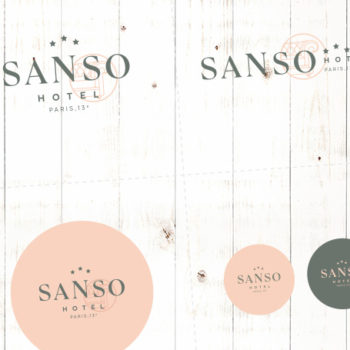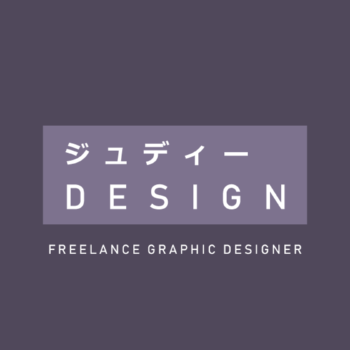Every graphic designer has experienced the hell of a tyrannical client who requests endless and ridiculous changes to a project. Whether freelance or in-house, this will probably have happened to you at least once in your career.
Today I’m going to look at ways to avoid it. Because, guess what, the problem doesn’t always stem from the client. In fact, the attitude of the designer, from the beginning of the brief is just as important: the way they manage the project, anticipate and respond to requests for changes play a significant role in ensuring that both the work, and the relationship between client and designer, are a success.
The classic situation
The client asks you to move a 10-pixel block of text to the left or to make the title 10 times bigger, and change it to red, with a yellow outline, and drop shadow. You know, without even trying, that it’s going to look dreadful. Not just aesthetically, but also functionally. And it’s tempting to want to dig your heels in and tell the client that they know nothing about design and they should let you do your job…
But do you really think the client is going to say ‘Oh, of course, I am sorry. What was I thinking?’ It’s more likely that they will dig their heels in too, that the situation will go pear-shaped and your relationship will deteriorate.
Clients aren’t usually a pain because they enjoy being a pain. It’s just what you have created isn’t what they want. And they are perfectly entitled not to be completely satisfied with your first suggestions. However, not being a designer, they probably struggle to define exactly what isn’t right, or don’t know how to explain it. What’s more, they probably don’t understand the roles, who does what, in your working relationship.
How to avoid an argument
Instead of fighting your corner, help your client. Ask yourself, and THEM, why they think the suggested change is necessary? What bothers them? And then, with your expertise and knowledge of the job, you can find a design solution that works.
It won’t be red or drop shadow. It might be a more global layout change. But you will be responding to, and satisfying your client’s expectations, rather than leaving them to express, however clumsily, what they think might work.
Furthermore, you will have shown your client that you are in charge of the project, but also that you know how to listen, and that they can trust you. They will understand that your talent stretches beyond manipulating a mouse or mastering software. After all, this is why they hired you and are paying you!
How to manage feedback
It is a good idea to prime your client on how to give feedback. Ask them questions that will help them shape their opinion. Explain what you have done, and use points from the brief to back it up. And remind them as you go of the steps that are still to come, so that the client knows what stage you are at in the project. Most of all, don’t just give them your mock-up and expect them to get on with it. The client doesn’t know what you want.
I have got into the habit of telling my clients to take their time with a first layout, and not to respond straightaway. I also suggest that they print it, if possible, and look at it on different devices (smartphone, laptop, tablet, etc).
Prepare the ground from the very beginning
Before you even reach the first layout stage, you should help the client express and shape what they want. They may not be used to working with designers, or may have developed bad habits working with others in the past.
This is an excellent way for you to show them the added value that you are bringing to the project.
And it is very likely that you can forestall many later changes. In order to do that, ask them lots of questions at brief stage, in order to really pinpoint what they want. Even if they have written a brief, I still send them a thorough questionnaire which helps me nail what they are after.
You should also be clear about the key moments when you will involve the client or show them your progress. Don’t wait until you have finished the whole design, don’t show them 50 different mock-ups and, most of all, only show them the ones that you want them to use.
Explaining your work process on a page of your website and reminding the clients of the main points during the first meeting usually makes a good start. It can even be reassuring.
Be friendly, but professional
As a supplier, you have everything to gain by being friendly, positive, responsive, and proactive.
Often when a client sends me changes that might ruin the work, I take the lead. I suggest a solution, explaining why it works better. Depending on the client, and the work involved, I sometimes show them both: the version they have requested, and my solution. That way they can compare the results, which makes it easier for them to accept your suggestion.
At all times, try not to get irritated: stay calm, gracious, objective, rational; be accommodating and helpful. Be aware of your tone of voice and the language you use (avoid phrases like ‘it’s so ugly; it’s nonsense, etc). If either you or the client get too heated, steer the conversation back on to a professional plane as soon as possible.
If you establish a healthy working relationship from the beginning then the client will gradually learn how to express what they want and will trust you to carry out their brief. They will understand that you are both professional and sympathetic to their needs, and not just a misunderstood artist who only wants to do their own thing.
When it’s already too late…
If communication has completely broken down and your client won’t change their mind, put your pride and your ego away and make the changes requested so that you can finish the job as soon as possible. And don’t work with that client, or one like them, again! Experience will tell you when it is better to do the work, and let go, rather than stubbornly insisting on your opinion, losing time and money.
During lockdown, like many people, I had less work. So I joined a website that put freelancers and clients in touch and took on a project at a much lower rate than usual.
However, the client was lovely and the project mostly went well. But after the first layouts, she wanted to change direction completely. And knowing how much money she was paying, I decided to do just what she asked. She was happy, the work went quickly, and in the end I got paid at my hourly rate after all.
Hey Judith,
Thanks for sending over the logo and style guide. I released the funds so you should get it today. It was fantastic working with you, I really appreciate how patient you were with us throughout the whole processes and pivots the client made. I’ll let you know again when we need your help!
Thanks,
But, having said that, I took no joy in designing this logo and you’ll never see it in my portfolio!
How to recognise problem clients
With experience you’ll learn who to avoid, before you agree to work with them. Here are some of the red flags to watch out for:
- How they approach you: how they write to you and talk to you about the project.
- They send a standard email, which has probably been sent to fifty other designers. A client who contacts you because they like your work, or because you have been recommended to them is always preferable because they want to work with you, and will therefore respect your work more.
- Clients with ridiculous budgets and unreasonable demands, who haggle over the cost from the beginning; they are always impossible to please.
How to attract the best clients
If you are only being approached by clients who are both difficult and/or have small budgets, it may be because of your positioning and the services you offer, or the way you are pitching yourself and your work, and the sort of work you include on your website portfolio.
Only share the projects which you are proud of, and which demonstrate the sort of work you would like to do again.
Summary
I began with how to react when the problems start, then worked my way back to what you can do to prevent the issue in the first place. Here is a list of what to do, in the order in which you should do them:
- Ensure that your website pitches you and your work at the right level, so that you attract the clients you want.
- Know how to spot the warning signs so that you can avoid working with problem clients.
- Ask the right questions at brief stage so that everyone knows what to expect and when. That way you will avoid both having to produce 50 mock-ups, and the endless back and forth of a feedback-correction loop.
- Clearly explain your method of working.
- Share your progress regularly, and help the client structure their feedback so that it is useful for you.
- Learn how to react calmly and professionally to change requests.
This is how I work and in almost two years as a freelance graphic designer I have not had any unhappy clients. In fact, they are usually delighted with my working methods, so much so that I have got back in contact with them to ask for feedback that I can share and publish on my website.
How about you? Do you often have issues with clients? Have you changed your method of working with them and their change requests over the years?







